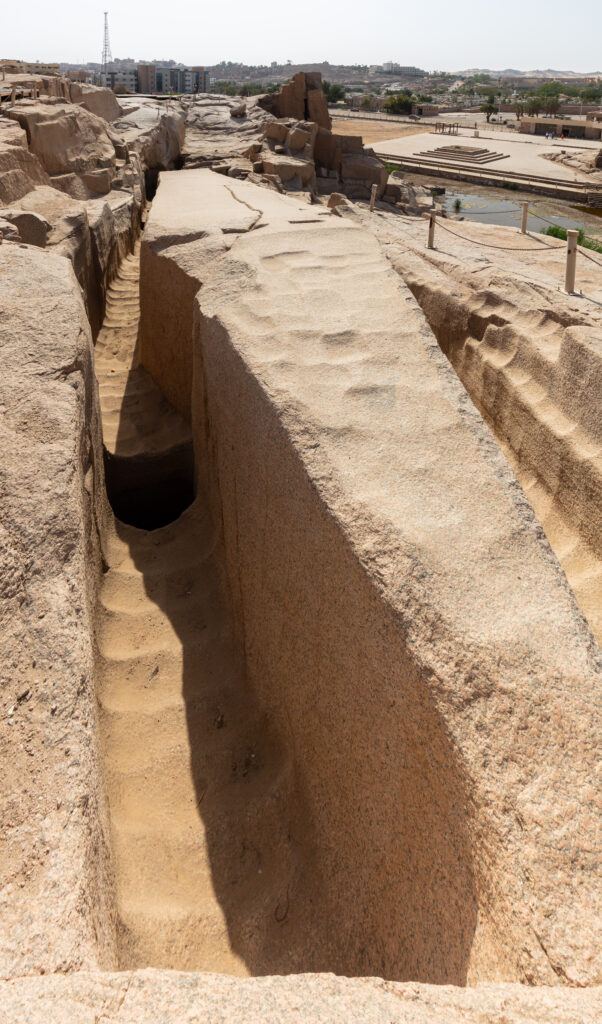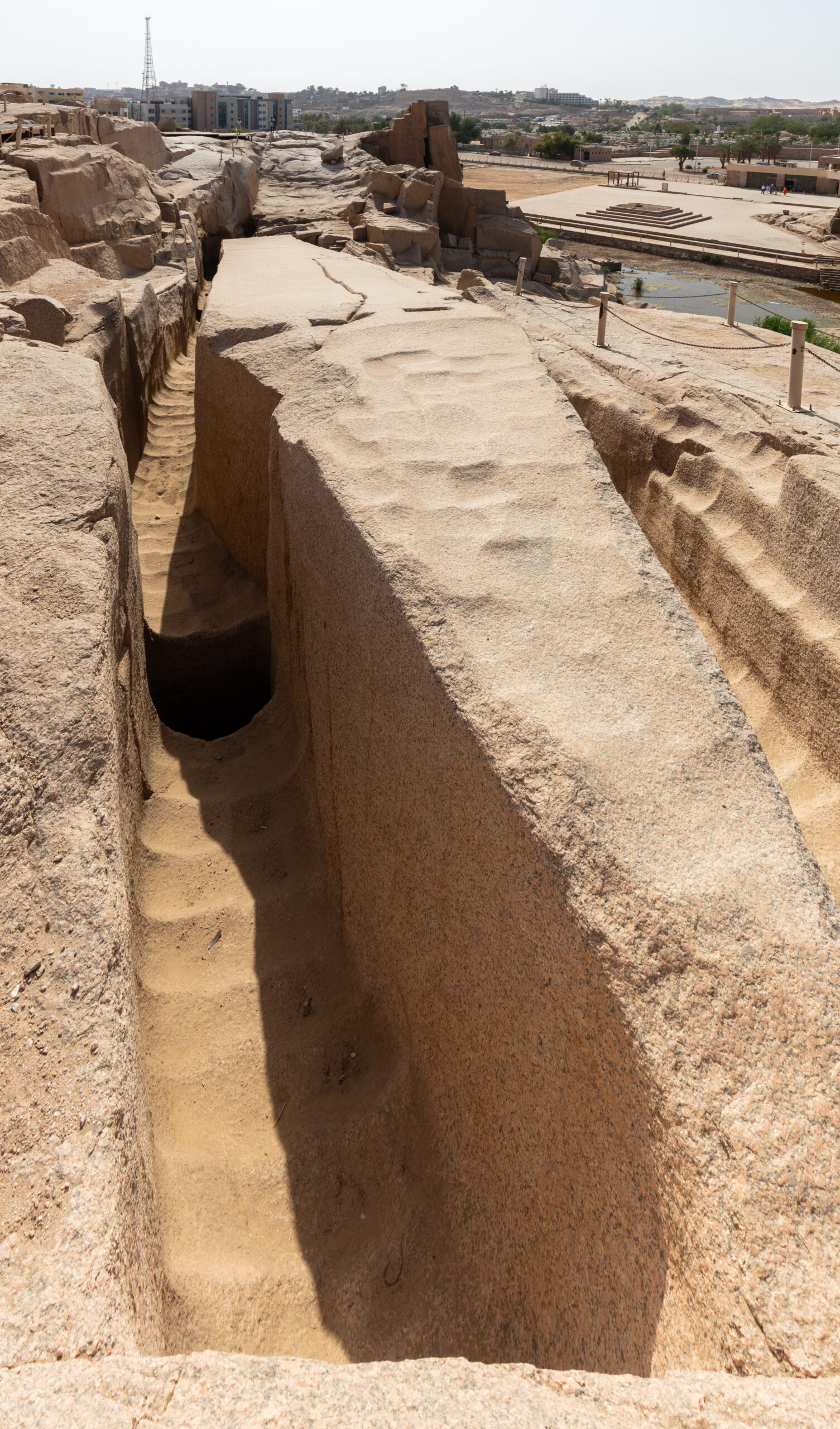The Missing Obelisk
It is the oldest known ancient Egyptian obelisk and is located in the northern part of the ancient quarries in Aswan. It was discovered in 1921 AD and was included in the UNESCO World Heritage List in 1979 as part of the Nubian Monuments from Abu Simbel to Philae Island.
Significance of the Incomplete Obelisk

The importance of this unfinished or incomplete obelisk lies in the wealth of information it provides about the tools and techniques used by the ancient Egyptians to carve these magnificent obelisks, which stand tall in front of temples and within their courtyards.
The body of obelisks tapers as it rises, ending in a small pyramid shape. Most obelisks, especially the huge ones, are carved from pink granite. The Missing Obelisk is also known as the Hatshepsut Obelisk, possibly dating back to the time of Queen Hatshepsut.
This obelisk was never completed, not due to worker error, but because of an improper crack in the mother rock. The obelisk remains at its original location, separated on all sides except the bottom. If it had been excavated, it would have stood 41 meters tall, with a base approximately 4.5 meters on each side, and a total weight of about 1,168 tons.
Around the site, there are many diorite balls used to cut these obelisks from the bedrock. Diorite was considered harder than granite, so these balls were hammered around the obelisk to separate and extract it from the rock. These black-green balls, some complete and others broken, have an average diameter of 15 to 25 cm and weigh between 5 to 8 kilograms. Workers used them as hammering tools to cut the stone.
In addition to its historical and architectural significance, the site in Aswan offers insight into the daily lives of ancient craftsmen. The surrounding quarry reveals not only the techniques used for large-scale stone carving but also the social organization behind such massive projects. Workers likely lived nearby, relying on a coordinated system of labor, tools, and planning. The precision of the work, even by today’s standards, is astonishing. Visiting the area allows travelers to connect deeply with ancient Egypt—not just through its temples and tombs, but through the raw, unfinished story of a monument that never reached the sky.
The Importance of the Unfinished Obelisk in Aswan
The Unfinished Obelisk in Aswan stands as one of the most remarkable and revealing archaeological sites in Egypt. Carved directly into the bedrock of an ancient granite quarry, this massive monument offers a rare and invaluable glimpse into the techniques and challenges faced by ancient Egyptian stonemasons. If completed, it would have been the largest obelisk ever constructed, measuring an estimated 42 meters in height and weighing over 1,000 tons.
Commissioned during the reign of Queen Hatshepsut in the 15th century BCE, the monument was likely intended to adorn the Karnak Temple in Luxor. However, a critical crack discovered during the carving process led to the abandonment of the project. This flaw preserved the site in its incomplete state and has become a unique window into ancient engineering methods. Tool marks and chisel lines are still visible on the surface, providing archaeologists with evidence of the labor-intensive techniques used to shape and extract obelisks from solid rock.
Beyond its archaeological value, the Unfinished monument underscores the ambition and skill of ancient Egyptian builders. The scale of the monument reveals their understanding of geometry, material strength, and transportation challenges—particularly the daunting task of moving such a massive object from the quarry to its final location, likely using sleds and Nile barges.
Today, the Unfinished monument is a major attraction in Aswan, drawing visitors and scholars alike. It not only enriches our understanding of ancient Egyptian construction but also symbolizes the enduring legacy of a civilization that aimed to reach monumental heights, even when nature intervened. Its preserved state makes it one of the most instructive sites for anyone interested in the wonders of ancient technology and the human drive to create lasting monuments.
Popular Hurghada Tours

